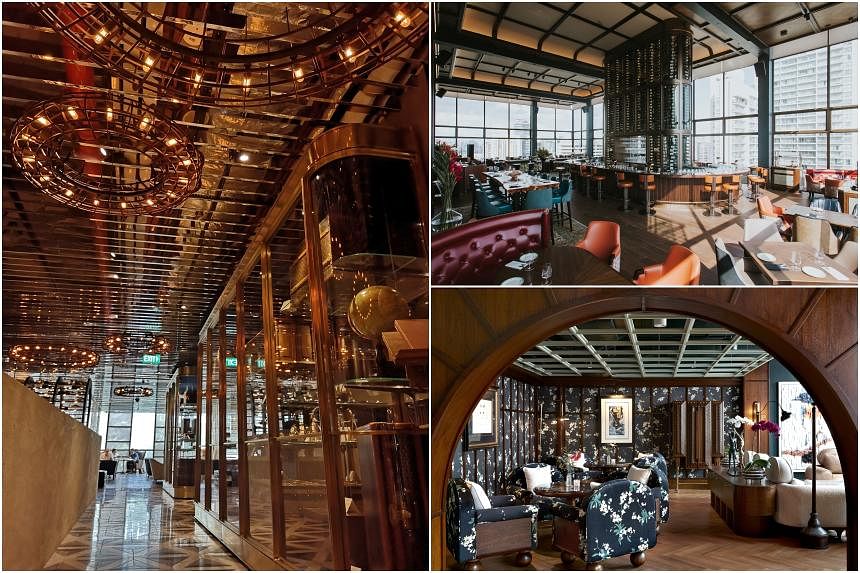SINGAPORE – Mr Grant Ashton was chuffed when his search for a Singapore location for 67 Pall Mall – a private members’ club devoted to fine wine founded by him – led him to the former private dwelling of movie magnate Tan Sri Dr Runme Shaw.
The 56-year-old Briton had wanted something with a sense of history, but the heritage buildings he viewed in Chinatown, Duxton Hill and the Fullerton area did not quite send a frisson down his spine.
But his imagination took flight when he stepped into the Shaw Centre penthouse, located on the 27th and 28th floors of Shaw Centre in Scotts Road.
Dr Shaw – who together with his late brother Run Run established the Shaw Brothers movie studio in Hong Kong – had lived in the palatial 15,000 sq ft penthouse until he died in 1985.
Boasting a grand double-volume ballroom, it was where the movie magnate threw extravagant soirees and wined and dined luminaries and celebrities.
Mr Ashton decided it would be the perfect venue for the Singapore chapter of 67 Pall Mall.
The first one opened in London in 2015 in a building in Pall Mall designed by the late Sir Edwin Lutyens, a renowned British architect.
The club in Singapore, which opened in March 2022, is its third, after Verbier in Switzerland. Two more 67 Pall Mall clubs are set to open in Bordeaux and Beaune in France. The club in Bordeaux is targeted to open in April 2024.
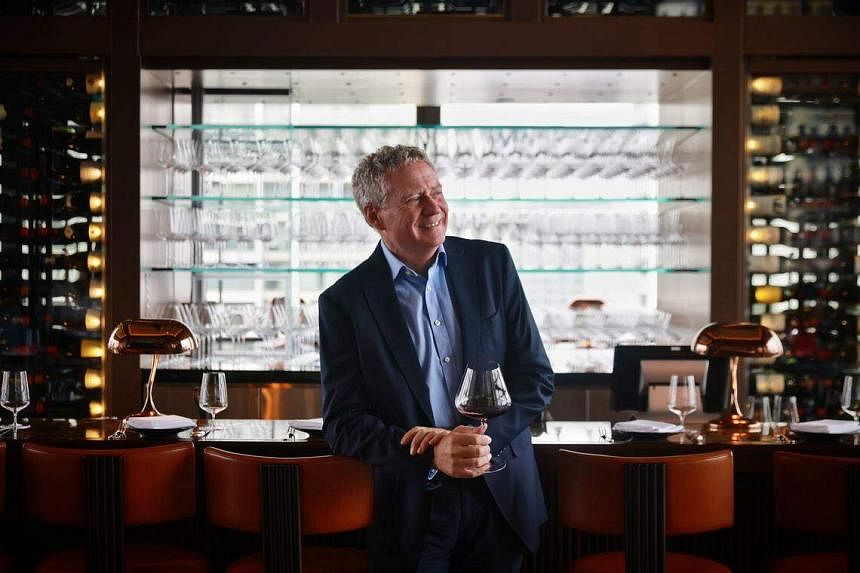
Mr Ashton and his partners spent $14 million renovating the penthouse, settling on a design concept developed around the history of the space and its former resident. The palette, for instance, was inspired by the hues of Chinese and Malay films of the 1950s and 1960s. The Shaws had a studio in Jalan Ampas off Balestier, where many Malay movies were made between 1947 and 1969.
Mr Ashton says it was never his intention to replicate his London club. “It’s important to get the cultural references right. If I do a club in Singapore, it will be a Singapore club.”
67 Pall Mall in Singapore – owned by Mr Ashton and shareholders which include the Les Amis Group – is not the only private club with interiors designed to reflect Singapore’s history.
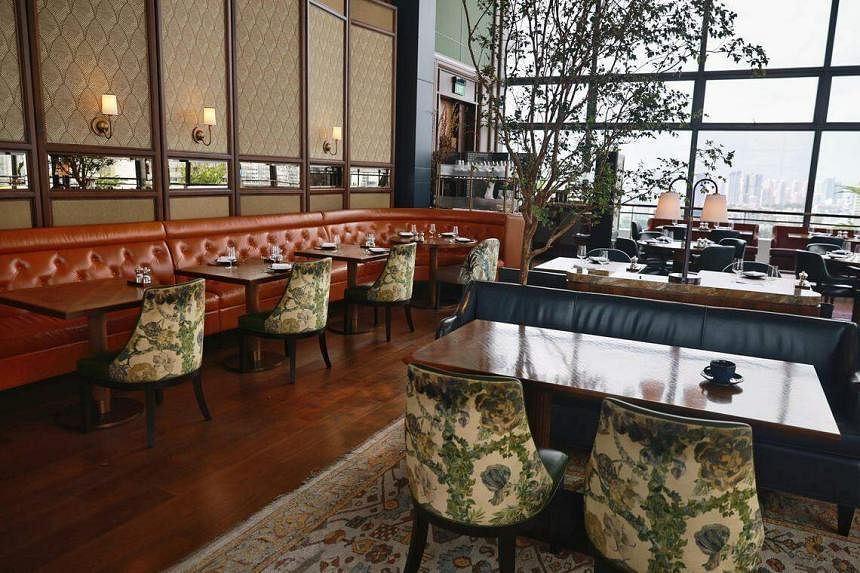
Another club that references Singapore’s past is 1880 in Robertson Quay. It opened in 2017 and its name is an homage to the period Robertson Quay was added to the Singapore River.
Club founder Marc Nicholson says the area was where boats from the region would dock for repairs and where the crew would spend their shore leave. “It was a time when Singapore was making Asia part of the global trading machine, and Robertson Quay was a place of rest and relaxation before the onward journey. What a great analogy for a club,” adds the 54-year-old, who is from Canada.
When he began conceptualising 1880, design was a priority, along with membership and programming.
The club was inspired by his parents’ weekly salons or gatherings of people from different walks of life to discuss and debate pertinent issues of the day. “I learnt that when people engage in dialogue about things they disagree about, you have a real opportunity to make progress,” he says.
At 1880, there are about 100 to 150 programmes a month, including talks and dinners that are conceived as platforms for social interaction and debate. And its members have to be like-minded.
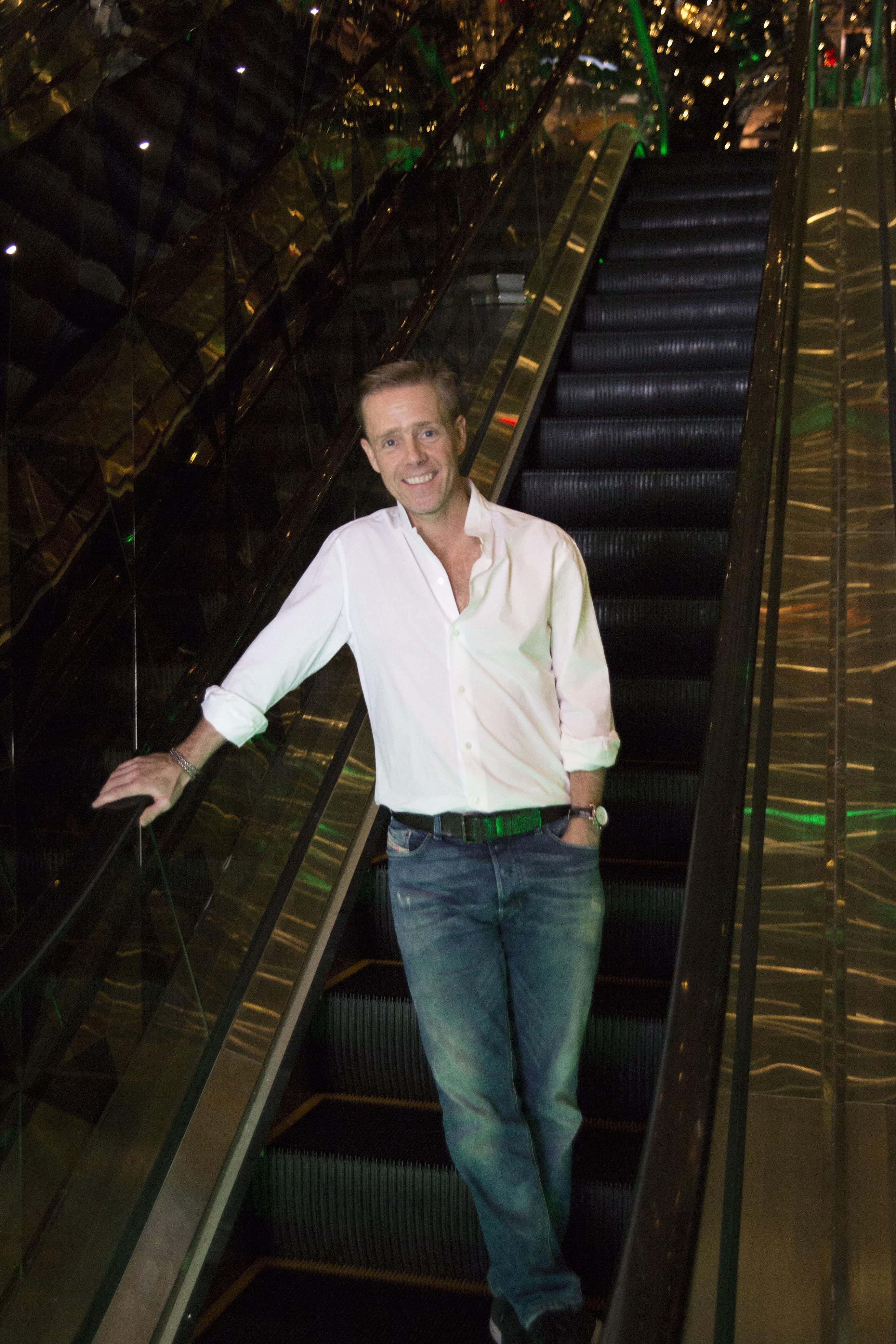
“All that matters is that you have a curiosity and concern for the world. And that you are an agitator at some level,” says Mr Nicholson.
For the design, he did not shy away from early-Singapore cultural references either.
“The initial design brief was ‘opium den’,” he recalls. “I wanted the club to be uber-sexy.”
While this was toned down, there are still design references to Singapore’s early history as a trading port.
Perhaps the most literal of these is the design of the bar, which is adorned with more than 300 teapots from England.
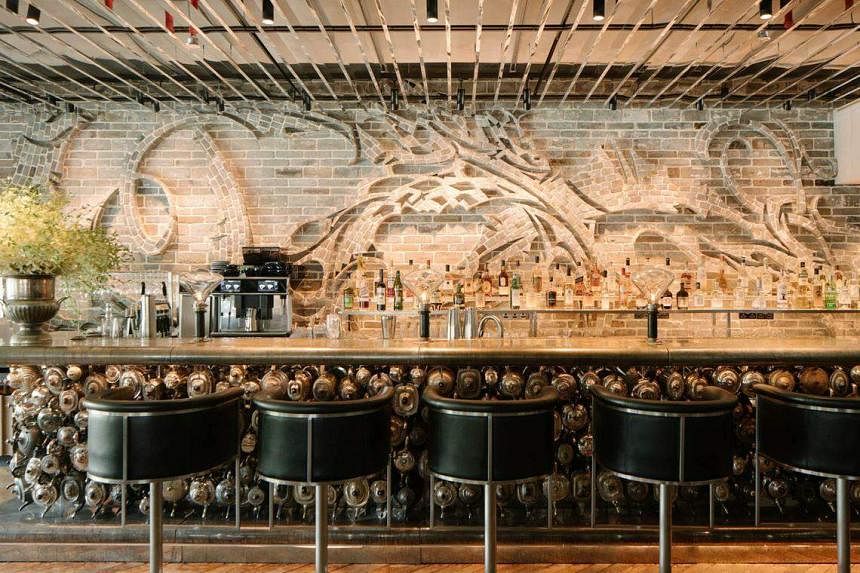
Another club that has history embedded into its foundation is Mandala Club in Bukit Pasoh Road, where several traditional clan associations are located.
The club, which opened in 2021, is in a building that was built in 1928 and has conservation status.
It is owned by the Mandala Group, which has been in the F&B and hospitality sector in Asia since 2010.
Mr Ben Jones, 44, chief executive and founder of the group, says: “We have always prided ourselves on being a group which offers some of the world’s most beautiful spaces, be it in Singapore, Bali in Indonesia or Niseko in Japan.”
The Singapore club has three dedicated restaurants, and food is important here.
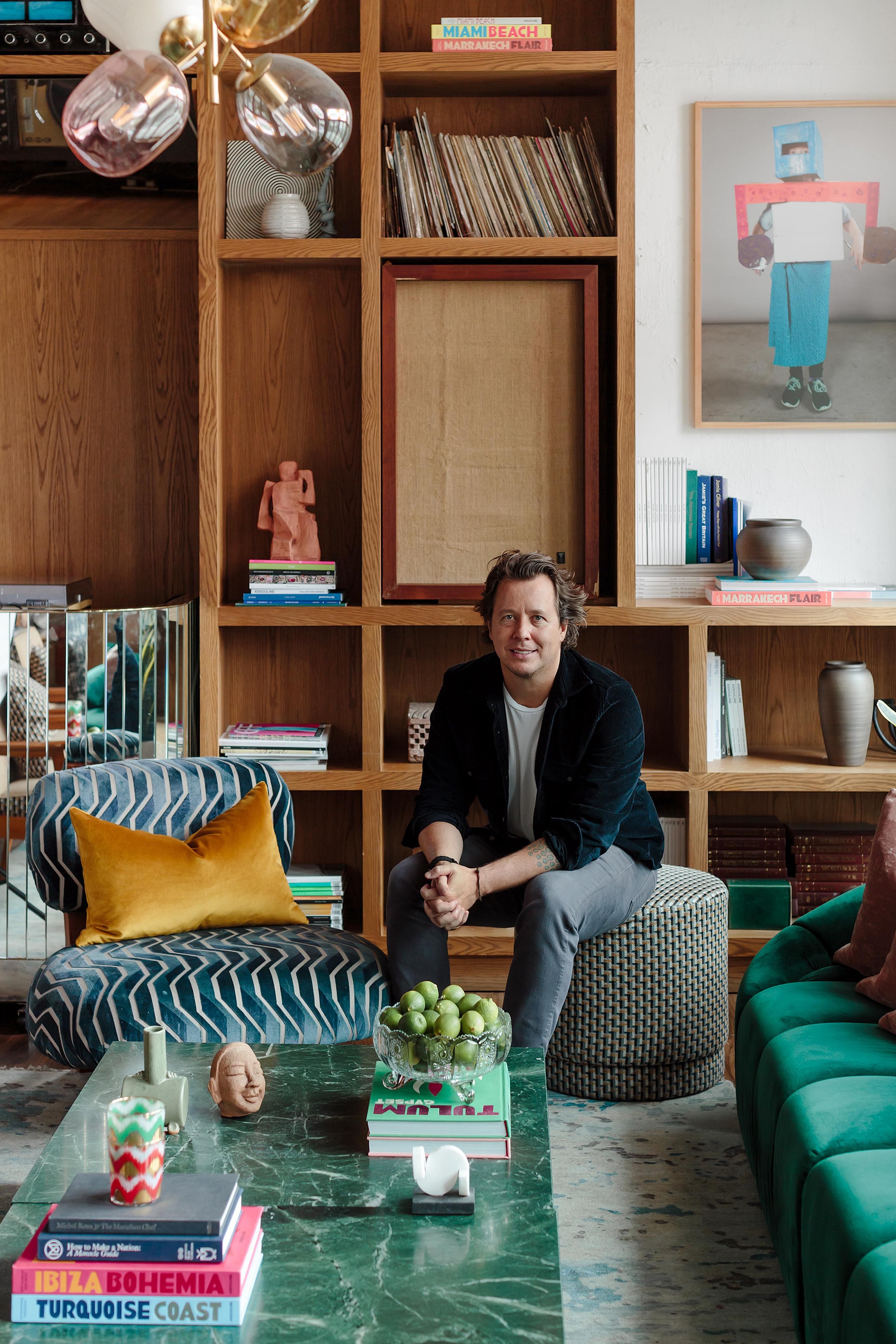
In an e-mail interview, Mr Jones says: “It isn’t necessarily the cuisine that has pulled our members in, but the connections that deepen over social interactions.”
He adds that these connections are made with events programming that focuses on the future, the arts, taste, well-being, purpose and play.
Prior to becoming the Mandala Club, the premises housed another club known as Straits Clan, which was opened in 2018 by Mr Wee Teng Wen of The Lo & Behold Group.
And before that, it was boutique hotel The New Majestic Hotel, owned by hospitality entrepreneur Loh Lik Peng. He still owns the building, and Mr Loh and Mr Wee are minority shareholders in the Mandala Group.
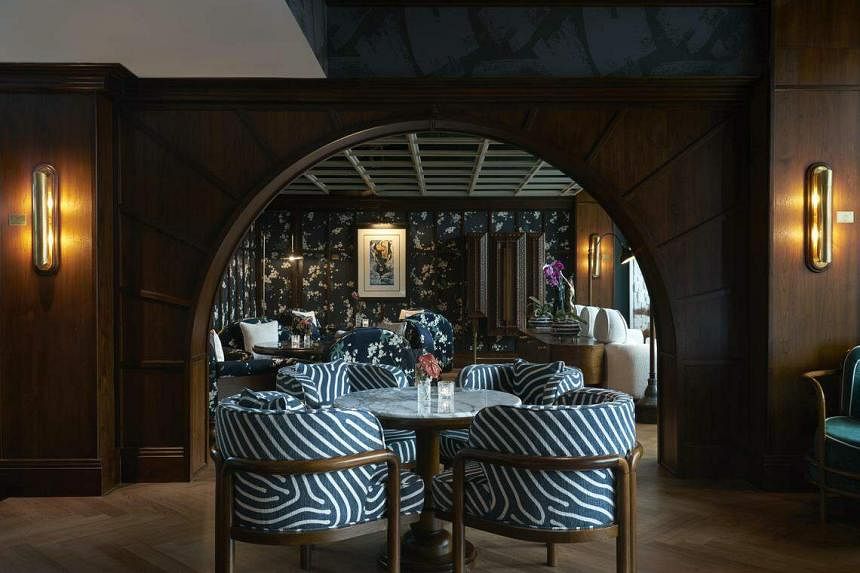
While clan associations of old served specific migrant populations or workers, clubs today have a more varied mix of members.
At Mandala Club, for example, its members come from more than 65 countries. Mr Jones says its community of members is “curated”, with an equal number of local and international members. The average age of its members is 35, with the youngest just 22.
The design of Mandala Club is distinctly retro, with a mid-century modern design aesthetic inspiring the designs of both the bespoke furniture and choice of vintage pieces.
Private clubs have many distinguishing features and attributes. These establishments show that when done sensitively, design can be one of them.
Here is a closer look at the three clubs.
1. 67 Pall Mall
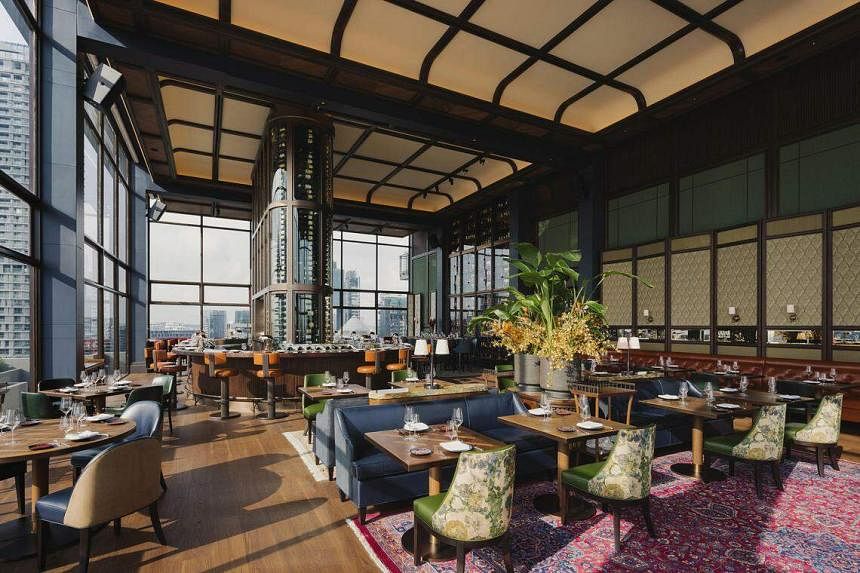
The large ballroom in the penthouse of Shaw Centre in Scotts Road still has some of the residual glamour from a movie industry that was once the pride of Singapore and Asia.
The 3,000 sq ft ballroom, which has a ceiling height of 6.8m, would have been the venue of many a lavish party.
Now, 50 years later, it has been injected with new life.
Together with the rest of the penthouse, the ballroom is part of the 15,000 sq ft members’ club 67 Pall Mall. When founder Mr Ashton, who is also chief executive of the club, first saw the space, he knew the design had to be impressive.
“Because of the ceiling height, I had to make a statement,” says the former banker.
The ballroom is now 67 Pall Mall’s Clubroom and Restaurant. In the middle is a huge tower to store the club’s collection of wine.
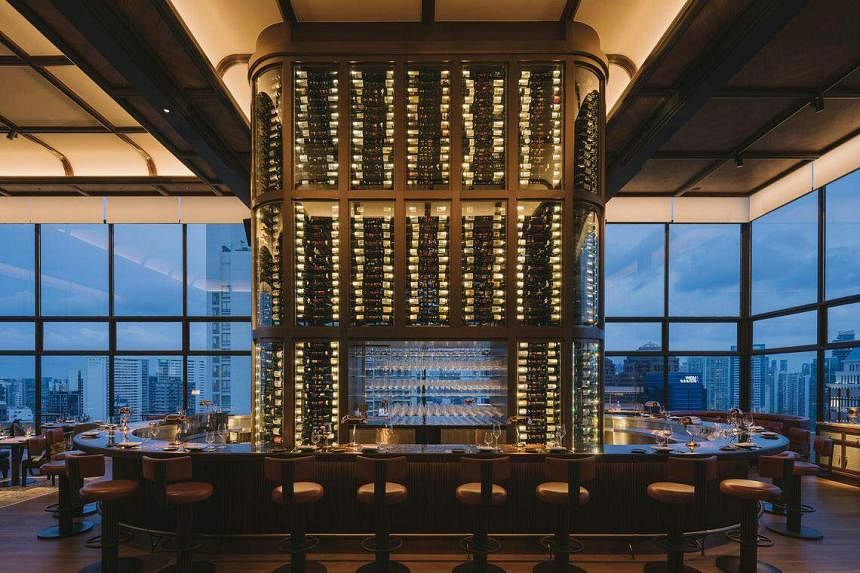
The wine tower – conceived by Mr Ashton – is 6m high and made of metal and glass. Weighing 17 tonnes, it is so heavy that the entire floor of the penthouse had to be reinforced to take the load and the columns on the floors below re-strengthened too.
The club’s design was done by British designer Geila Daughtrey, founder of Singapore-based design firm Rockett Studio, which was established in 2014.
The design concept was developed around the history of the space and its former resident.
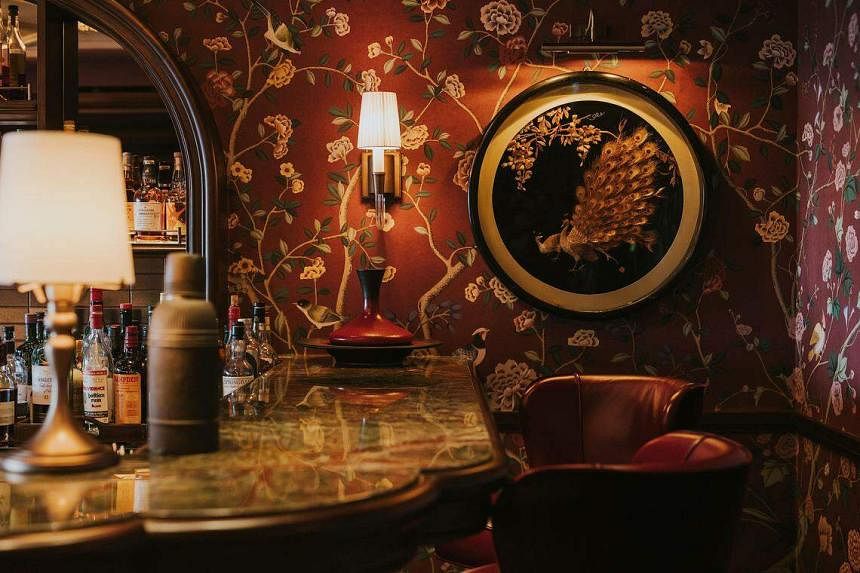
Dr Shaw moved from Shanghai to Singapore in the 1920s, and the design reflects this old-world vibe with walls that are cladded with solid timber panelling of camphor burl wood.
To add a “sense of place”, hand-painted wallcoverings with designs reflecting Singapore’s birds and flora were commissioned.
Different designs were created for the club’s various spaces, including the private dining rooms, the Whiskey Bar and a lounge called the Naughty Corner, which was a bedroom in the old days.
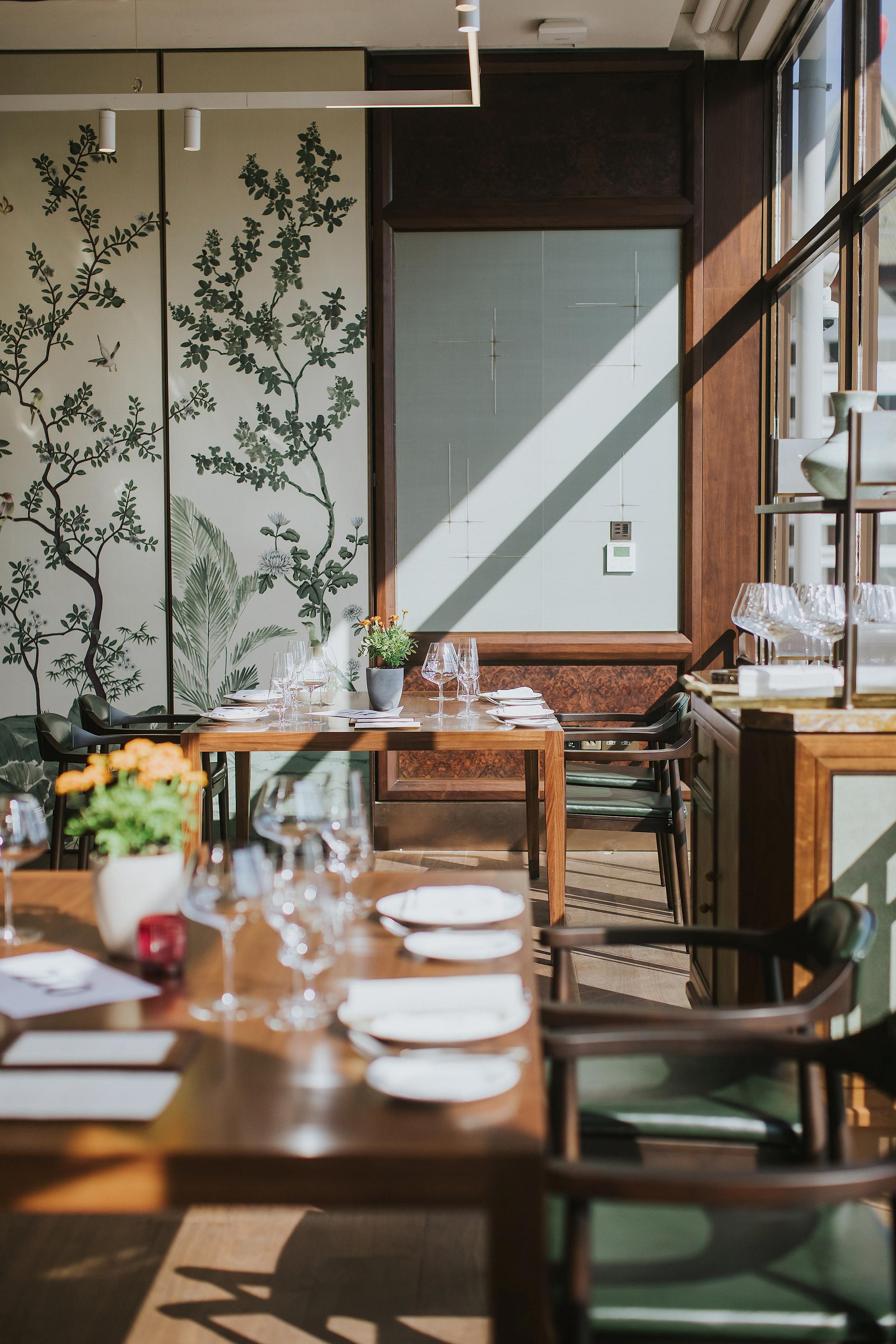
Ms Daughtrey adds that the palette was inspired by the hues of Chinese and Malay films of the 1950s and 1960s.
To emphasise the history of the space and the aura of Dr Shaw, a selection of original fittings was reinstated. “We salvaged and repurposed various original light fittings from the residence during the renovation, such as the vintage crystal chandeliers and wall sconces which were polished and reconditioned,” says Ms Daughtrey, who is in her 40s.
The designers were also given free access to the Shaw family’s collection stored in a Singapore warehouse. Old photographs, artworks and movie memorabilia including old cinema chairs were carefully curated and woven into the interior design.
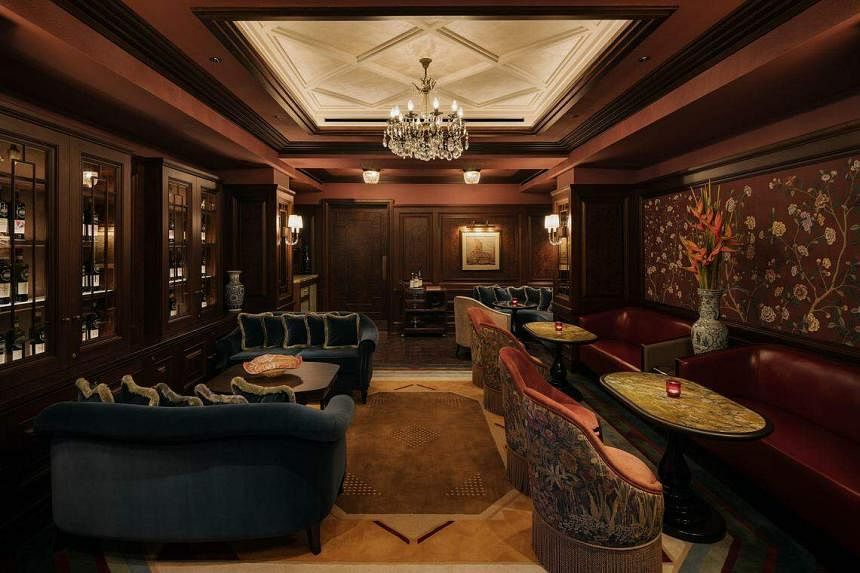
Other subtle design references include door handles fashioned in an ornate Peranakan style.
The wine tower, however, is not subtle. With more than 5,000 different wines, the club is said to have the longest wine list in Singapore. Of these wines, 1,000 can be had by the glass.
67 Pall Mall has 17 sommeliers to attend to its 2,500 members.
A wine tower will now feature in new 67 Pall Mall clubs too, including those in Bordeaux and Beaune in France, says Mr Ashton. The club in Bordeaux, which will open in April 2024, will boast a wine tower that stands at more than 8m high.
2. 1880
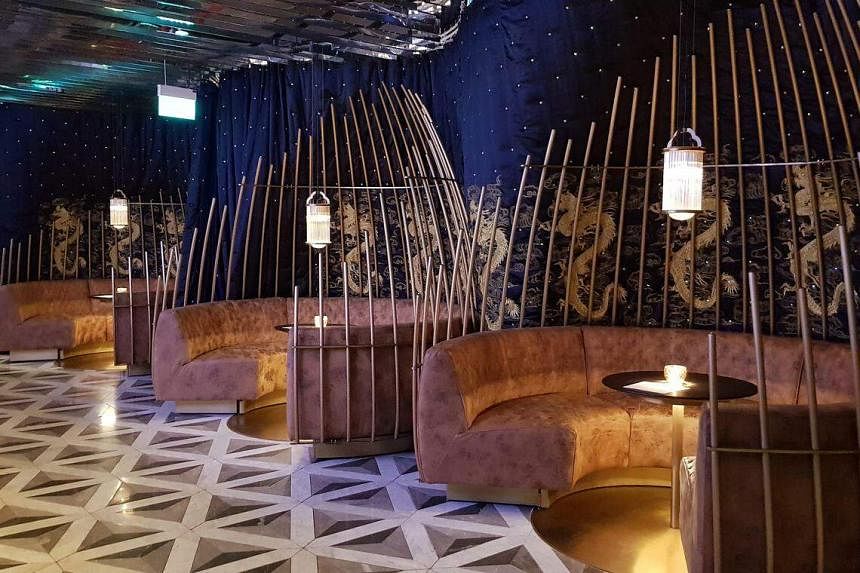
Describing the interior design of members’ club 1880 is not easy. From curtains embroidered with dragons to phone booths that look like submersibles, there is a lot going on, design-wise.
Calling it all eclectic would not do it justice either, because in some sense, the design does read as a comprehensible whole, partly because its founder created a compelling design narrative.
“I am not a designer, but I care about aesthetics a lot,” says Mr Nicholson, who has lived in Singapore since 2002 and worked in the advertising industry.
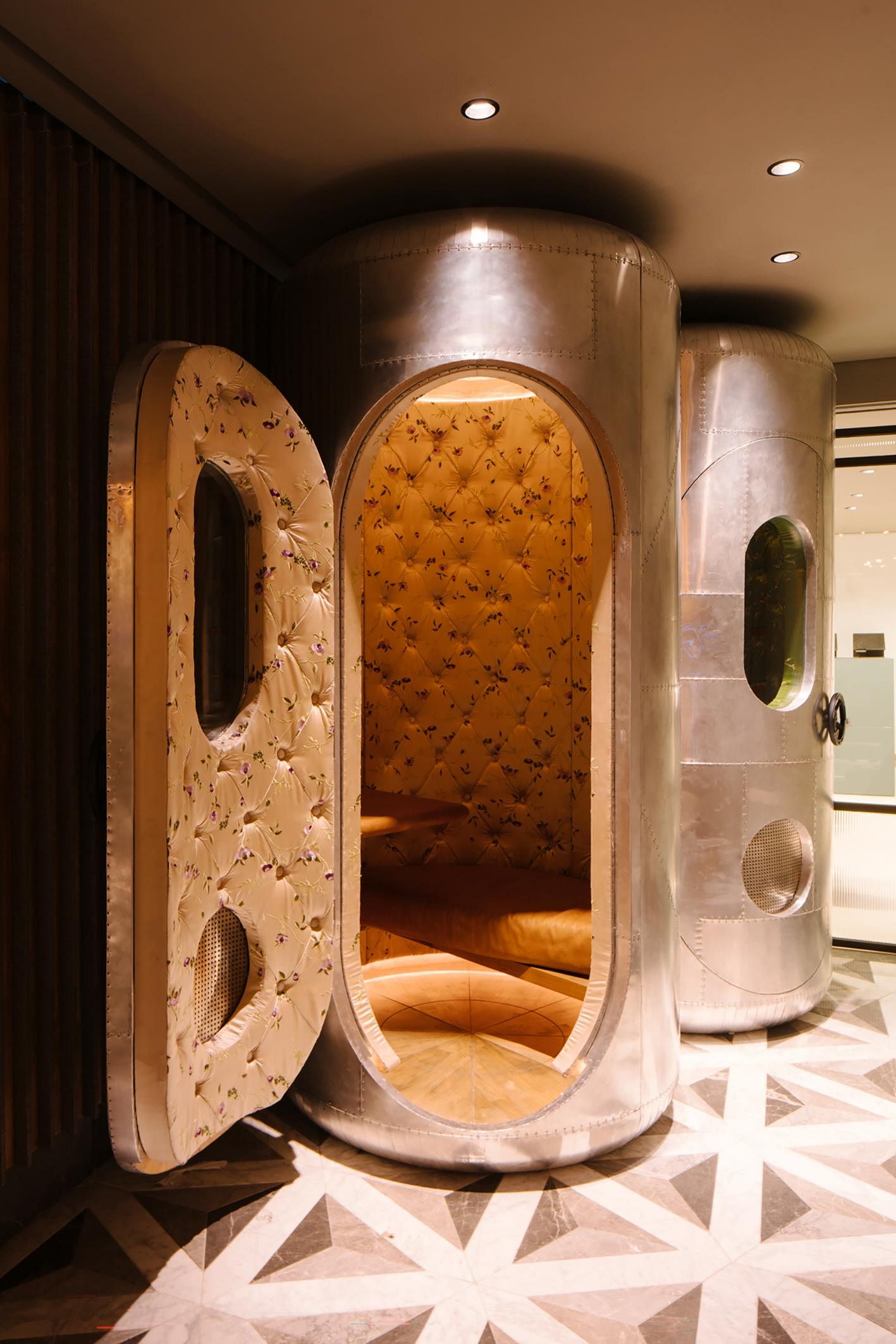
The club opened in 2017, but even before it had a name, Mr Nicholson did research on the club’s intended location in Robertson Quay.
He found out that warehouses and boatyards were built over reclaimed swamps in the 1880s, making the area Singapore’s third wharf after Boat Quay and Clarke Quay.
The notion that the area’s entertainment offerings attracted a heady mix of traders, labourers and sailors from around the region enthralled Mr Nicholson.
He asked British designer Timothy Oulton, known for putting a spin on classic English design, to helm the renovation of the 22,000 sq ft club.
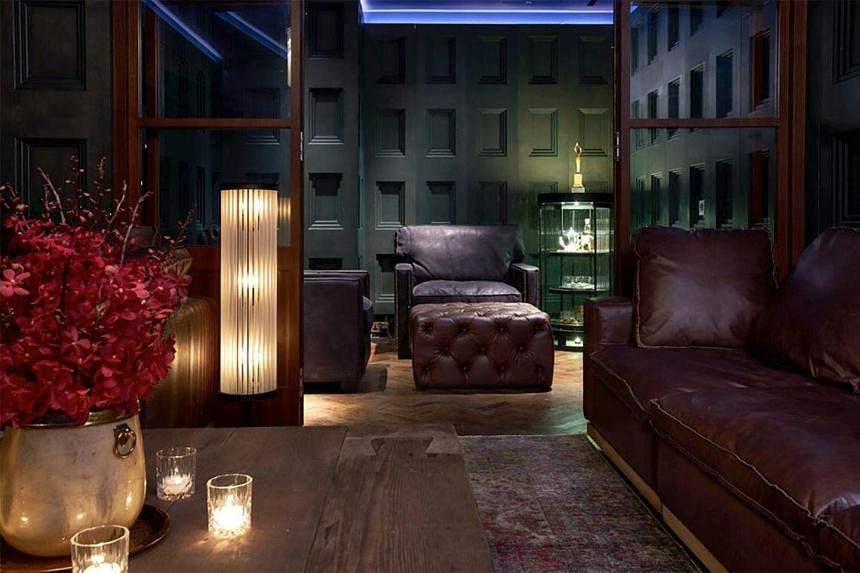
By way of a design brief, Mr Nicholson told the designer of his impression of two clubs he had visited in London.
“I told him one was beautifully designed, but left me cold. The other one was weirdly designed, but generated warmth. We have to generate warmth.”
The designers at Timothy Oulton Studio first looked at where the club was to be located, taking Singapore, “the quintessential melting pot”, as a key part of the aesthetic inspiration.
The design firm’s co-founder Simon Laws says: “Design always starts with the location and history, and how that all interacts with the practical needs of the project.”
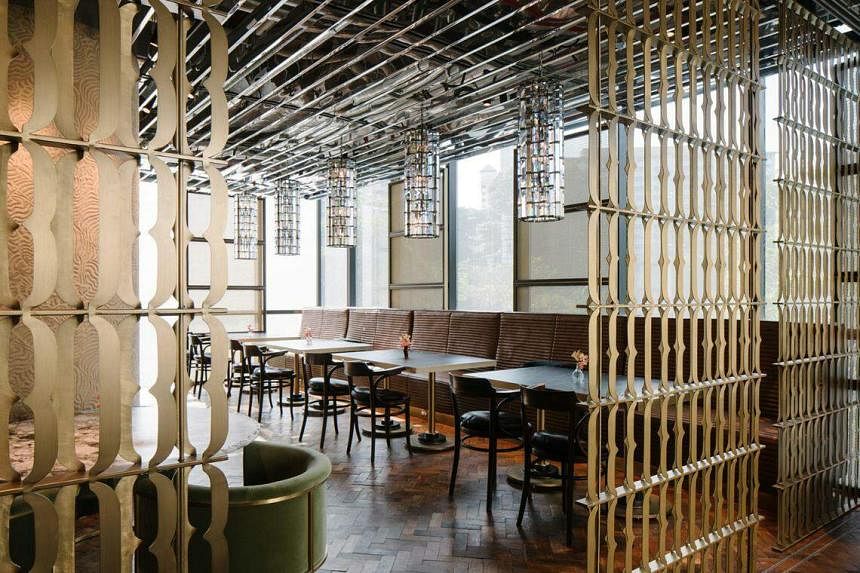
While a melting pot does suggest an eclectic approach, Mr Laws prefers to think of it as a “deliberate juxtaposition of materials and forms to heighten the experience of the various spaces”.
An example of this would be the columns in the club’s restaurant, Leonie’s, that look carved out of stone, but are actually clad in a carpeting material that is soft to the touch.
In the area called The Double, revolving banquettes with birdcage-like frames and silk embroidered curtains transform the cafe and arrival area into a nightclub after 7pm.
Mr Laws adds: “Lanterns hang from the ceiling to create an intimate and moody space that recalls past eras of Chinese and European nightlife.”
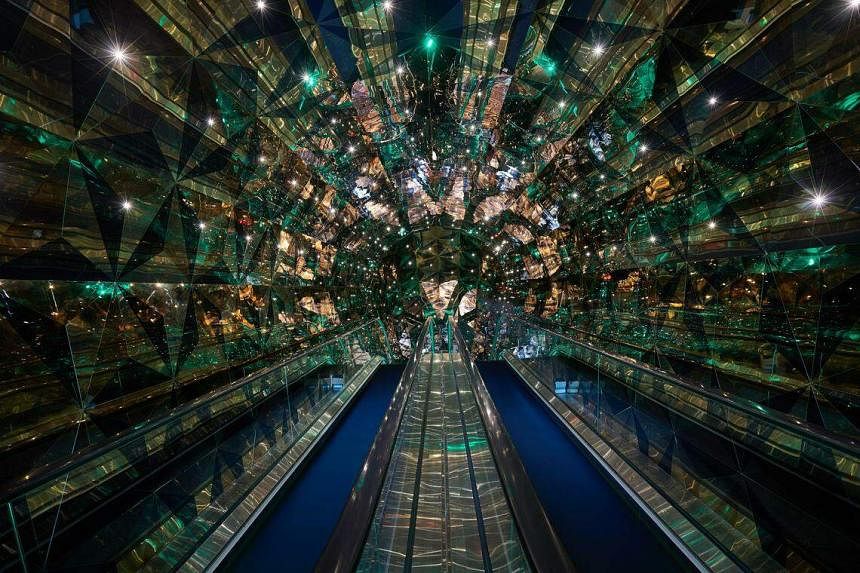
The design of 1880 is a bit extreme – members enter the club via an escalator shaft clad in reflective faceted panels designed to feel like the inside of a giant kaleidoscope. But the design also has a fearless, derring-do quality.
This fearlessness is further borne out in the club’s ethos of instigating debate and discourse as a means to effect progress and change. 1880 does this by programming member events and talks that cover topics from the arts and the environment to artificial intelligence and human rights.
“You name it, we cover it. We are not afraid of anything,” says Mr Nicholson.
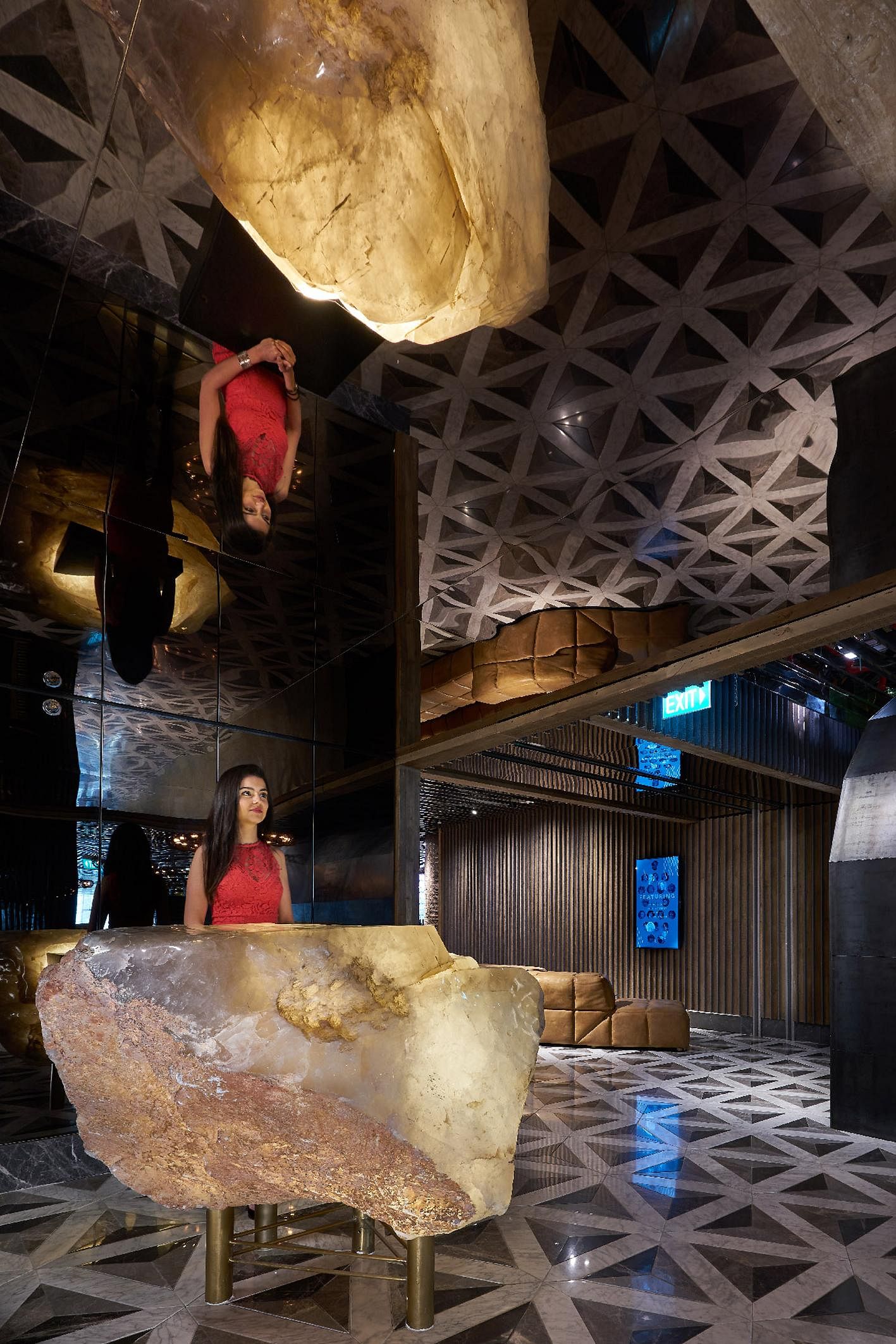
He was shocked, however, when he found out that the front desk of the club, which incorporates a two-tonne quartz crystal, was going to cost $50,000. But he got over it and has since decided to make it a feature in the new clubs he will open soon in Hong Kong and Bali at the start of 2024. “It has become our mascot,” he says.
3. Mandala Club
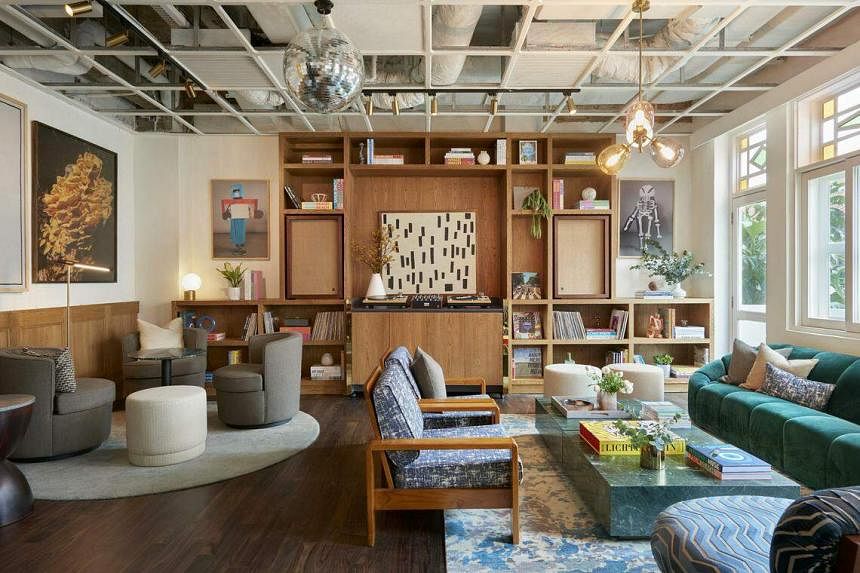
Privately owned members’ clubs are increasingly becoming a home away from home for its members. Mandala Club’s designers wanted the space to also look like home.
The club was opened by the Mandala Group in November 2021, taking over the operations of another members’ club, Straits Clan.
The club is located in Bukit Pasoh Road, famous for its many clan associations, some of which are more than 100 years old.
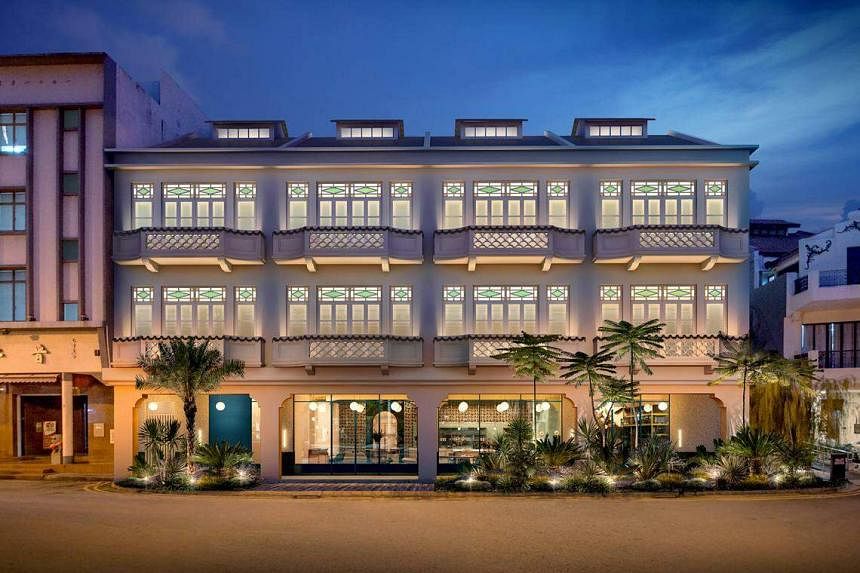
Like the clan associations which offered a welcoming space for migrant workers from China who came to Singapore in the 19th century, the designers for the Mandala Club sought to make its space an extension of the members’ homes.
Mandala Group founder Mr Jones says the design brief was “to create a club space that felt like an exaggerated, well-lived-in home”. He adds that being homely means that boundaries between the front and back of house are blurred.
In an e-mail interview, he adds: “In our opinion, the most beautiful homes are those that celebrate a sense of history with an edit of treasured old items blended with the new.”
The club, which has a floor area of 22,300 sq ft, occupies space in a building that was completed in 1928. It has conservation status and retains its original facade, with Art Deco features such as balconies with scallop-shaped breeze blocks.
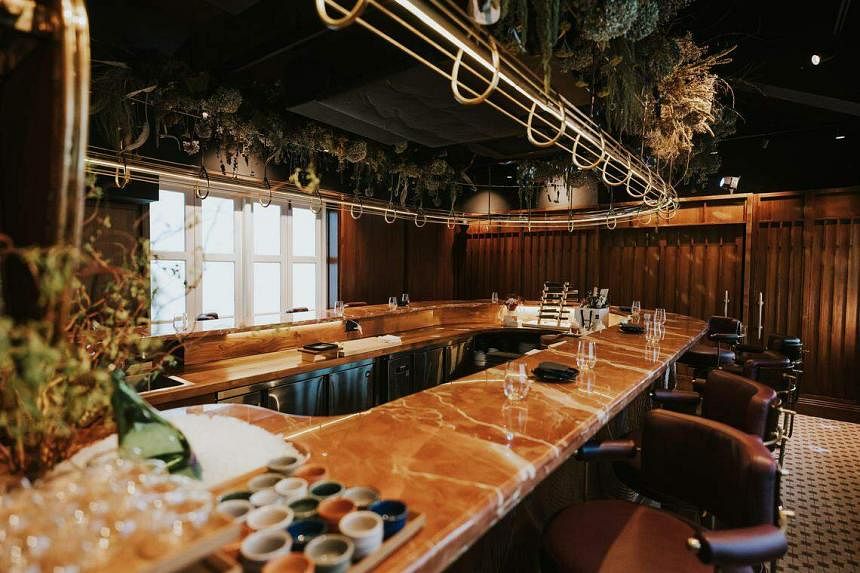
Internally, the owners of Mandala Club decided to retain some parts of the former Straits Clan. However, the third floor was gutted.
It is on this floor that the new Straits Parlour was created by design studio Superlative, which is part of the Mandala Group.
Group creative director Lauren Mathewson, 34, describes the design aesthetic as “eclectic with a mid-century modern sensibility”.
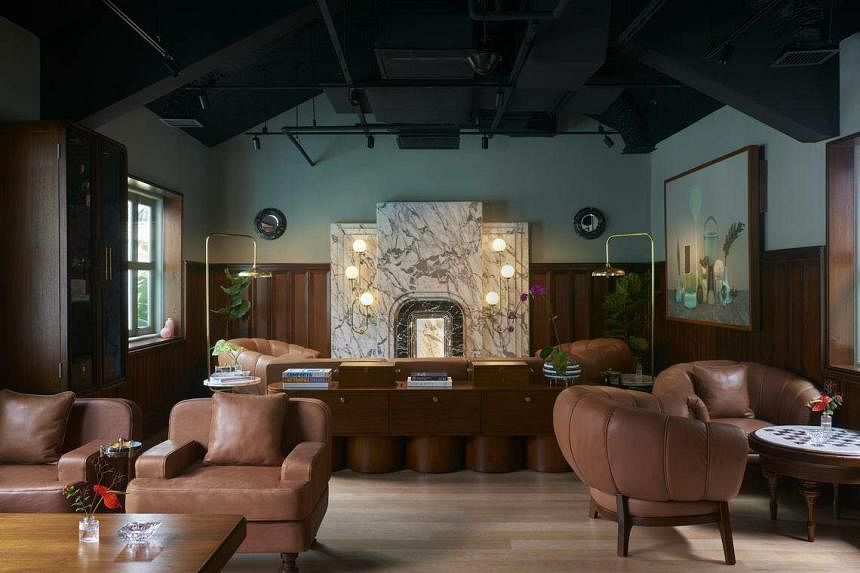
There are elements of Art Deco styling, with geometric motifs evident in the detailing of features such as the faux marble fireplace in the space called The Den.
The main feature in the Straits Parlour is a large circular bar with a 5.6m diameter. It has delicate timber trellis detailing that suggests a Japanese influence, as does the floral upholstery in the lounge area called The Orchid Room.
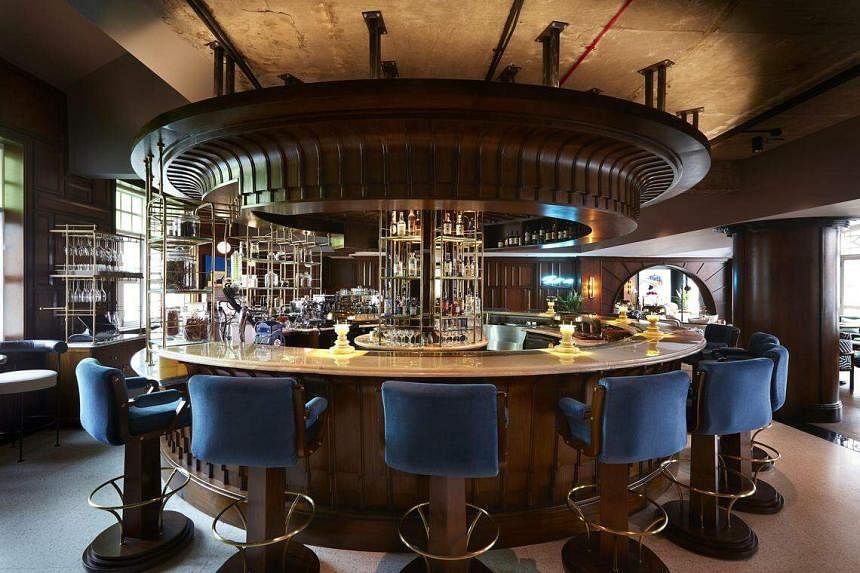
In another lounge area called The Palm Room, zebra-striped upholstery is set against timber-panelled walls.
The effect is a space that is casual and laid-back.
With boundaries blurred, members are also often found walking in and out of the kitchen. “We want to keep the feeling loose,” says Ms Mathewson.
